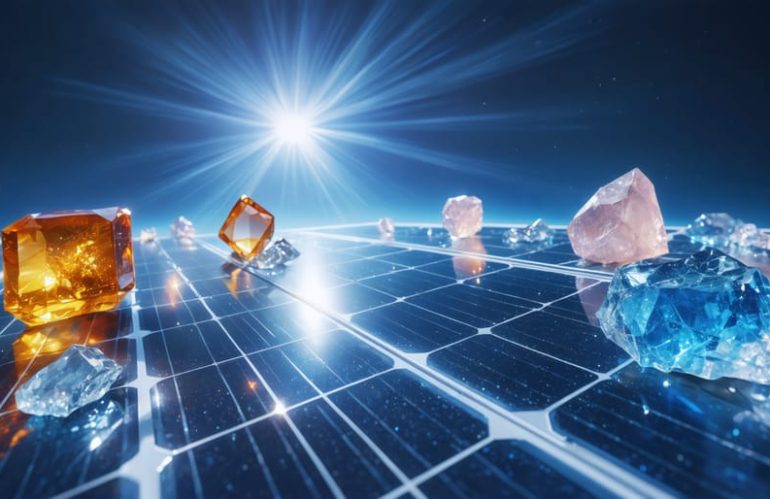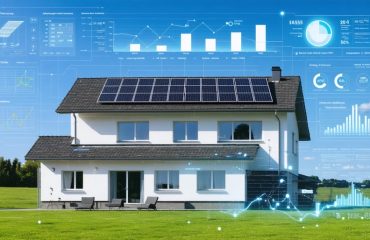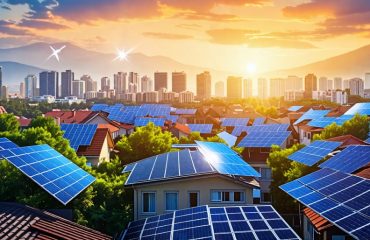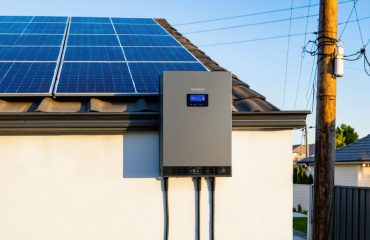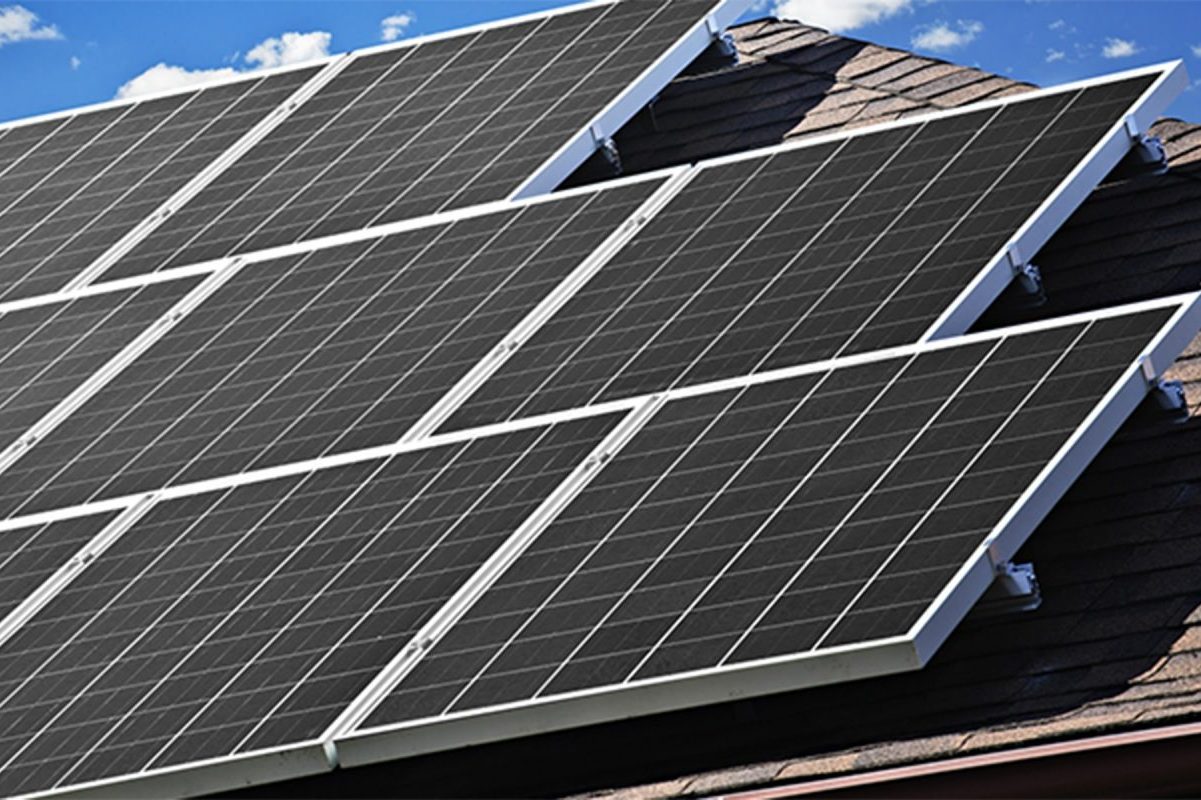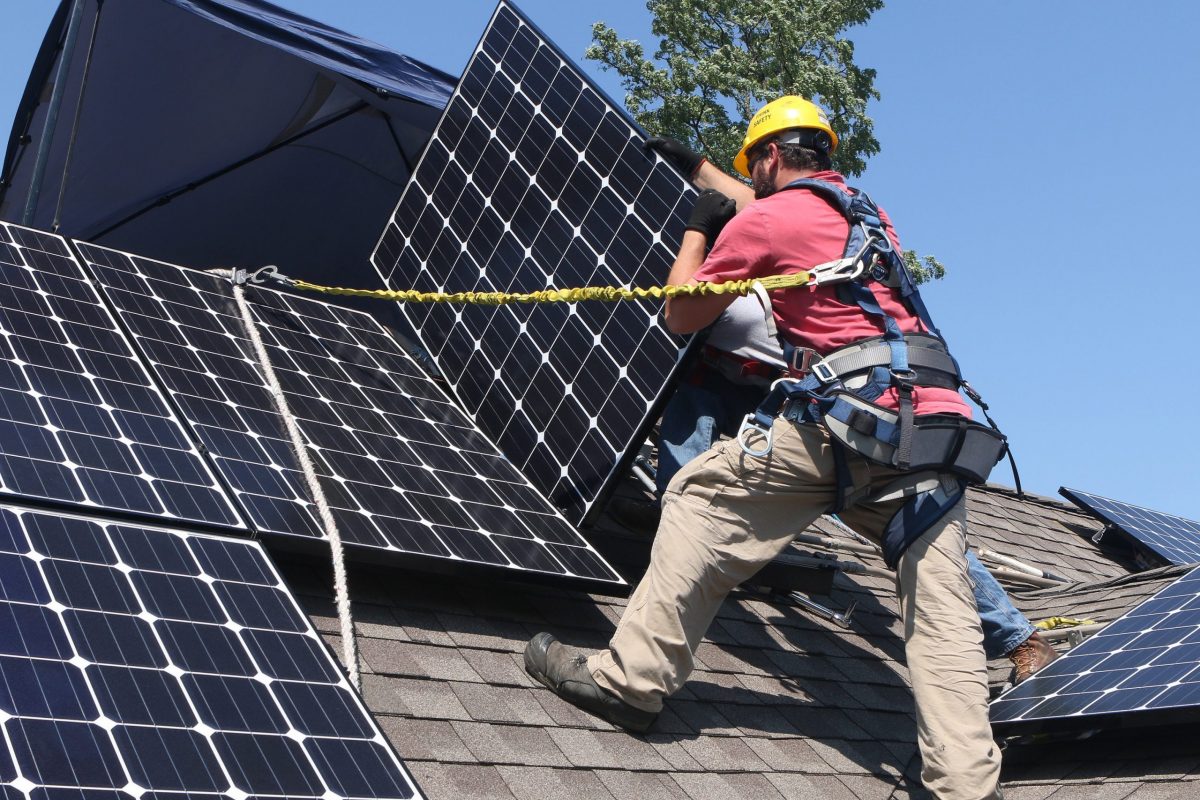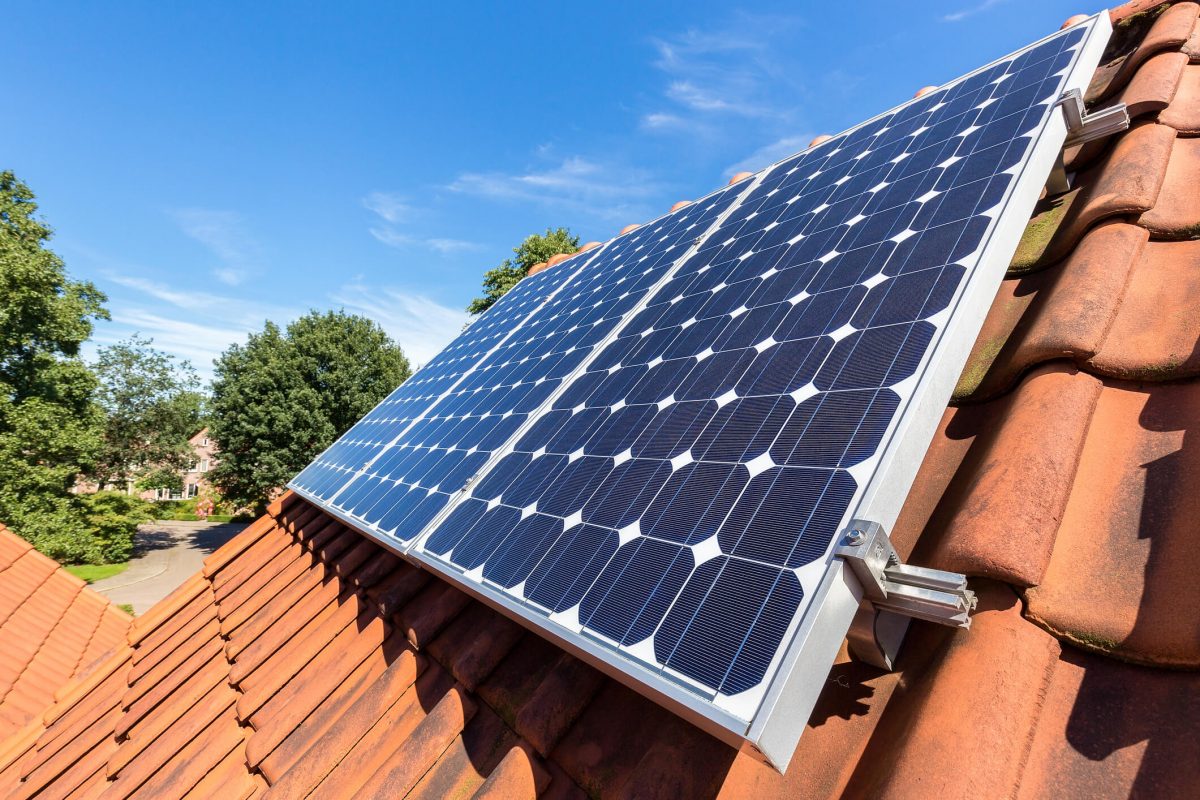Solar panels represent a remarkable fusion of Earth’s raw materials transformed into clean energy technology. At their core, these innovative devices rely primarily on high-grade silicon, the second most abundant element in the Earth’s crust, alongside precise amounts of silver, copper, and aluminum. The careful selection and quality of these materials directly impact a solar panel’s efficiency, lifespan, and ultimately, your return on investment.
As global demand for solar technology continues to surge, manufacturers are pioneering new material combinations and engineering techniques to enhance performance while reducing costs. From traditional crystalline silicon cells to emerging technologies using perovskites and gallium arsenide, the evolution of solar panel materials reflects our growing commitment to sustainable energy solutions.
Understanding the raw materials in your solar panels isn’t just about technical specifications – it’s about making informed decisions that affect your home’s energy independence for decades to come. This knowledge empowers you to choose panels that offer the best balance of durability, efficiency, and value for your specific needs.
Silicon: The Foundation of Modern Solar Panels
Monocrystalline vs. Polycrystalline Silicon
When it comes to solar panel efficiency and durability, the choice between monocrystalline and polycrystalline silicon makes a significant difference. Monocrystalline panels are made from a single crystal structure, resulting in higher efficiency rates of 15-22% and a sleek, uniform black appearance. These panels perform better in low-light conditions and typically last 25-30 years with minimal degradation.
Polycrystalline panels, created by melting multiple silicon fragments together, offer a more budget-friendly alternative. While they have slightly lower efficiency rates of 13-17%, they still provide reliable performance and a similar lifespan. Their distinctive blue, speckled appearance comes from the various silicon crystal formations within each cell.
Both types offer excellent longevity, with manufacturers typically guaranteeing 80% performance after 25 years. Monocrystalline panels are ideal for limited roof space where maximum efficiency is crucial, while polycrystalline panels offer better value for larger installations where space isn’t a constraint. Your choice ultimately depends on your specific needs, budget, and available installation space.
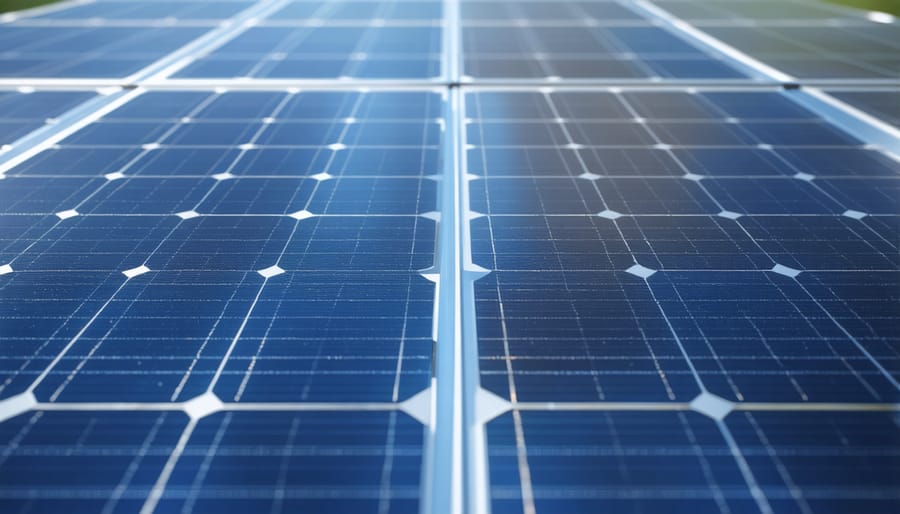
High-Grade Silicon’s Role in Panel Lifespan
The quality of silicon used in solar panels plays a crucial role in determining how long your solar investment will last. High-grade silicon, with its superior purity levels of 99.999%, ensures better energy conversion and slower degradation over time. This means your panels maintain their power output more effectively year after year.
Think of silicon quality like the foundation of a house – the better the materials, the longer it lasts. Premium-grade silicon resists common forms of wear and tear, including micro-cracks and heat-related stress. This resistance helps panels maintain their efficiency even after decades of exposure to varying weather conditions.
While high-grade silicon may increase the initial cost of solar panels, it typically pays for itself through extended panel life and consistent energy production. Most quality panels using premium silicon maintain about 80% of their original output even after 25 years, compared to lower-grade alternatives that may deteriorate more quickly.
For homeowners, this translates to more reliable energy production and better long-term savings on electricity bills. When selecting solar panels, checking the silicon grade used in manufacturing can help ensure you’re making a sound investment that will perform well for decades to come.
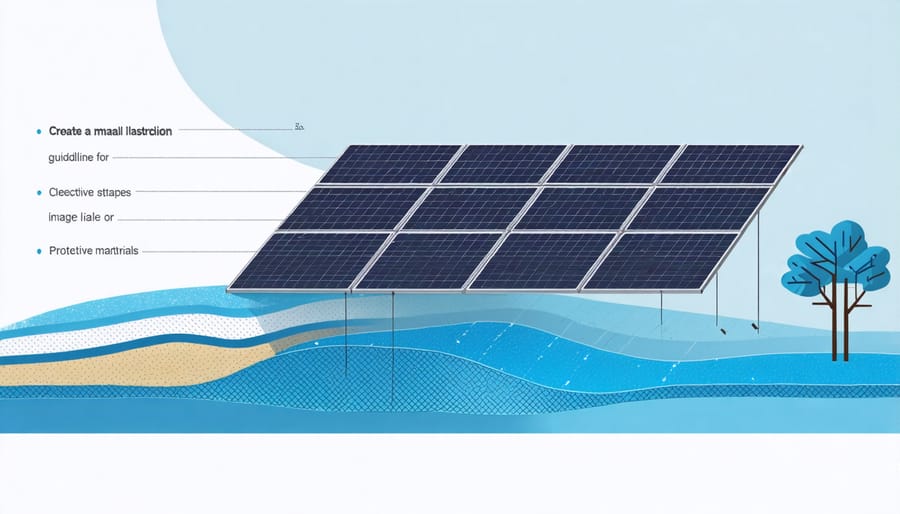
Protective Materials That Shield Your Investment
Advanced Glass Coatings
Modern solar panels feature sophisticated glass coatings that dramatically improve their efficiency and durability. These advanced coatings serve two crucial functions: reducing light reflection and keeping the panels cleaner for longer. Anti-reflective coatings can increase energy absorption by up to 3%, ensuring more sunlight reaches the solar cells beneath. This technology is particularly valuable for optimizing panel performance in harsh conditions.
Self-cleaning coatings represent another breakthrough in solar panel glass technology. These innovative surfaces use hydrophobic (water-repelling) or hydrophilic (water-attracting) properties to prevent dirt and debris from sticking to the panel surface. When it rains, water either beads up and rolls off, taking dirt with it, or spreads evenly across the surface to wash away accumulated dust and grime.
Many manufacturers now combine both coating types in a single layer, creating a protective shield that maximizes light transmission while minimizing maintenance needs. These coatings typically last the entire lifetime of the solar panel, providing decades of enhanced performance without requiring replacement or reapplication. For homeowners, this means higher energy production and lower maintenance costs over the system’s lifetime.
Weather-Resistant Backsheets
Weather-resistant backsheets are essential protective layers that shield solar panels from moisture, UV rays, and other environmental threats. Modern backsheets typically use multiple layers of specially designed polymers, with high-performance fluoropolymers like PVF (polyvinyl fluoride) leading the way in durability and protection.
Recent innovations have introduced more sustainable alternatives to traditional materials. For instance, some manufacturers now offer recyclable polyolefin-based backsheets that provide excellent weather resistance while reducing environmental impact. These new materials can withstand extreme temperatures, from scorching heat to freezing conditions, without compromising their protective properties.
Another breakthrough is the development of transparent backsheets, which allow bifacial solar panels to capture light from both sides, increasing overall energy production. These advanced materials maintain their protective qualities while enabling better performance.
Quality backsheets now come with warranties of 25 years or more, matching the lifespan of the solar panels themselves. They’re designed to prevent yellowing, cracking, and delamination – common issues that affected earlier generations of solar panels. For homeowners, this means longer-lasting panels and better protection for their investment, with minimal maintenance required over the system’s lifetime.
Emerging Materials Revolutionizing Solar Durability
Perovskite-Silicon Combinations
One of the most exciting developments in next-generation solar technology is the combination of perovskite and silicon materials in solar panels. This innovative pairing is helping to overcome traditional efficiency limitations while keeping costs manageable for homeowners.
Perovskite-silicon tandem cells work by capturing different parts of the solar spectrum more effectively than either material could alone. While traditional silicon panels typically convert 15-20% of sunlight into electricity, these hybrid panels can achieve efficiency rates above 29% – a significant improvement that means more power from the same roof space.
What makes this combination particularly promising for homeowners is that it builds upon the proven reliability of silicon while adding perovskite’s enhanced light-capturing abilities. Manufacturers are developing these panels to be just as durable as conventional options, with similar or better lifespans.
The cost of producing these hybrid panels is also becoming more competitive. As production scales up, experts predict that perovskite-silicon panels will offer homeowners a better return on investment through increased energy generation without a dramatic price premium. This means more savings on electricity bills and a shorter payback period for your solar investment.
These innovations are making solar power more efficient and accessible, helping homeowners maximize their energy independence while contributing to a cleaner environment.
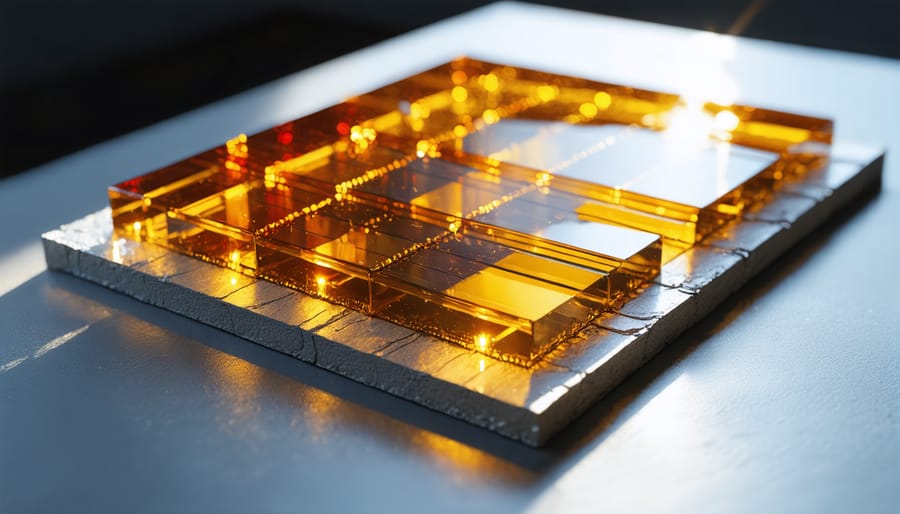
Enhanced Encapsulation Materials
Modern solar panels are getting better protection thanks to advanced encapsulation materials that act like a high-tech shield. These new materials go far beyond traditional EVA (ethylene vinyl acetate) by offering superior protection against moisture, heat, and UV rays. Polyolefin elastomers are leading this innovation, providing better transparency and longer-lasting protection than ever before.
These enhanced materials are helping solar panels last longer and perform better in challenging weather conditions. Think of them as a premium raincoat for your solar cells – they keep moisture out while letting maximum sunlight in. Some newer materials can even “self-heal” from minor damage, much like your skin repairs small scratches.
Manufacturers are also developing special coatings that prevent dust and dirt from sticking to panels, which means less maintenance for homeowners. These advanced materials typically add only a small cost to the overall panel price but can significantly extend their lifespan and maintain higher energy production over time.
For homeowners, these improvements mean more reliable performance and better value for money. While traditional EVA encapsulation might last 20-25 years, newer materials can potentially extend panel life beyond 30 years. They also help maintain higher efficiency levels throughout the panel’s lifetime, ensuring your investment continues to deliver strong returns year after year.
Making Smart Material Choices for Your Home
When selecting solar panels for your home, the materials used in their construction play a crucial role in determining both performance and longevity. Start by looking for panels with high-grade silicon cells, preferably monocrystalline or premium polycrystalline, as these offer the best balance of efficiency and durability. The frame material is equally important – opt for anodized aluminum frames, which resist corrosion and can withstand decades of exposure to the elements.
Glass quality matters significantly. Look for panels featuring tempered, anti-reflective glass with low iron content, as this combination maximizes light absorption while providing excellent protection against harsh weather conditions. The backing sheet should be made of durable materials like PVF (polyvinyl fluoride) or PET (polyethylene terephthalate), which prevent moisture infiltration and ensure longer panel life.
For optimal results, consider working with a professional who understands high-performance solar system design. They can help you select panels with the right material composition for your specific climate and energy needs. Remember to check warranty periods – quality manufacturers typically offer 25-year performance warranties, reflecting their confidence in their materials’ durability.
When comparing options, look beyond initial costs. Panels made with premium materials might cost more upfront but often deliver better long-term value through higher efficiency and reduced degradation rates. Choose manufacturers with proven track records and certifications from recognized testing laboratories to ensure your investment is protected.
Understanding the raw materials in solar panels empowers you to make smarter decisions about your renewable energy investment. From traditional silicon cells to emerging technologies like perovskites, each material choice affects your panel’s efficiency, durability, and environmental impact. By choosing panels with high-quality materials and proven track records, you can ensure optimal performance and longevity for your solar installation. Remember to consider both the initial cost and long-term benefits when selecting your panels, and don’t hesitate to ask manufacturers about their material sourcing and recycling programs. As the solar industry continues to innovate, staying informed about material advances will help you make the best choice for your home and the environment.

